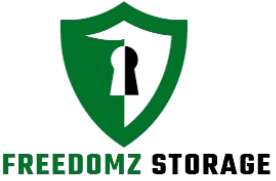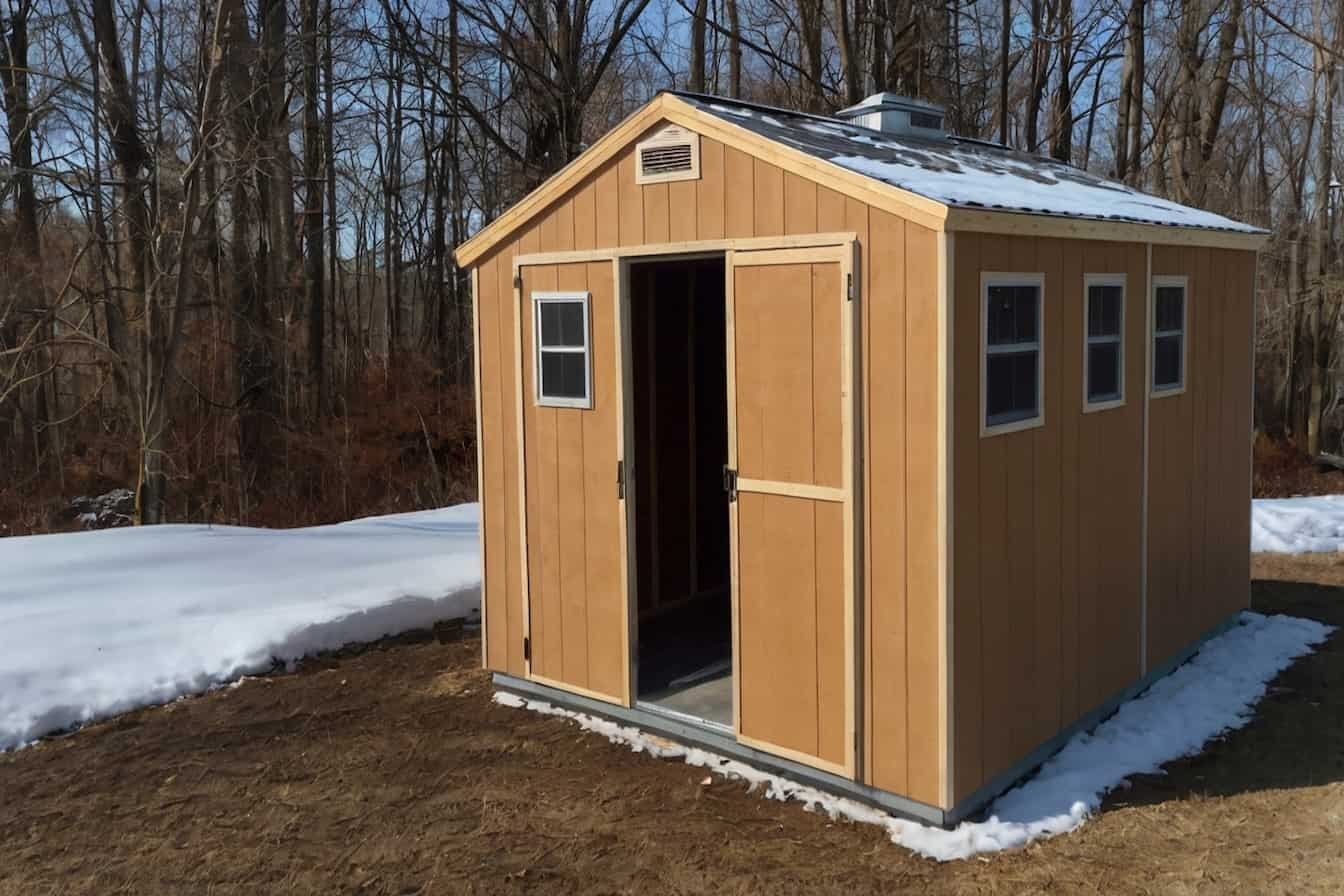When it comes to making the most out of your shed, especially during colder months, finding the best way to heat a 12×24 shed becomes essential.
Whether you use your shed for storage, a workshop, or a cozy retreat, it’s paramount to ensure it stays warm enough for your needs.
This guide will explore various heating options, considering effectiveness, safety, and budget. Let’s start by discussing.
Considerations Before Choosing a Heating Method
Assessing several factors before considering specific heating solutions is crucial to ensure you choose the most suitable option for your shed.
Size and Insulation of the Shed
The size and insulation of your shed play a significant role in determining the heating requirements. Larger sheds may require more powerful heating solutions, while well-insulated sheds can retain heat more efficiently.
Safety Considerations
Safety should always be a top priority when selecting a heating method. Consider factors like ventilation requirements, fire hazards, and potential carbon monoxide risks, especially if you plan to spend extended periods in the shed.
Budget Constraints
Budget constraints can also influence your choice of heating method. While some options may have higher upfront costs, they could offer long-term savings in energy efficiency or lower maintenance requirements.
Electric Heaters
Electric heaters are popular for heating sheds due to their ease of installation and relatively low operating costs.
Types of Electric Heaters
- Space Heaters: Portable and versatile, space heaters come in various sizes and designs, allowing you to choose the most suitable option for your shed.
- Wall-Mounted Heaters: For permanent installation, wall-mounted heaters can provide consistent heat without wasting valuable floor space.
Pros and Cons
- Pros: Efficient, easy to install, relatively inexpensive to operate.
- Cons: Dependence on electricity may need to provide more heat in icy conditions.
Propane Heaters
Propane heaters offer a reliable heating solution, especially in areas where electricity may be unreliable or unavailable.
Types of Propane Heaters
- Portable Propane Heaters: Perfect for sheds without permanent heating infrastructure, portable propane heaters offer flexibility and convenience.
- Mounted Propane Heaters: Ideal for larger sheds or workshops, mounted propane heaters provide consistent heat with minimal maintenance.
Pros and Cons
- Pros: Independent of electricity, powerful heating capabilities.
- Cons: It requires regular propane refills, and there are potential safety risks if incorrectly used.
Wood Stoves
Wood stoves add a rustic charm to any shed while providing efficient and cost-effective heating.
Installation and Maintenance
Installing a wood stove requires proper ventilation and adherence to local building codes. Regular cleaning and maintenance are essential to ensure safe and efficient operation.
Pros and Cons
- Pros: Generates consistent heat; fuel is readily available and affordable.
- Cons: It requires regular tending, and there are potential fire hazards if improperly maintained.
Radiant Heating
Radiant heating systems transfer heat directly to objects and people in the shed, creating a comfortable environment without circulating air.
How it Works
Radiant heating can be achieved through various methods, including electric panels, hydronic systems, and even infrared heaters.
Pros and Cons
- Pros: Energy-efficient, quiet operation, no air circulation.
- Cons: Higher initial costs may take longer to warm up the space.
Solar Heating Options
Harnessing solar energy to heat your shed can be environmentally friendly and cost-effective.
Types of Solar Heaters
- Solar Air Heaters: Solar panels heat air before circulating it into the shed.
- Solar Water Heaters: Solar energy is transferred to water and circulates through a radiant heating system.
Pros and Cons
- Pros: Sustainable, low operating costs, minimal maintenance.
- Cons: Dependence on sunlight availability means a higher initial investment.
Combination Systems
Combining different heating methods can offer the best of both worlds in terms of efficiency and flexibility.
Combining Different Heating Methods
For example, pairing electric heaters with solar panels can provide reliable heating even during power outages, while using a wood stove as a supplementary heat source can reduce reliance on other fuels.
Advantages and Considerations
- Advantages: Redundancy in heating systems, improved energy efficiency.
- Considerations: Compatibility between different systems, additional installation and maintenance requirements.
DIY Heating Solutions
DIY heating options abound for those on a tight budget or seeking a creative solution.
Creative Ways to Heat a Shed
There are plenty of inventive approaches to keeping your shed warm without breaking the bank, from repurposing old appliances to building homemade solar heaters.
Safety Precautions
Regardless of the heating method you choose, always prioritize safety by following manufacturer instructions, ensuring proper ventilation, and installing carbon monoxide detectors if necessary.
Best Way to Heat a Shed in Winter
When winter sets in, finding the best way to heat a shed becomes essential. Electric space heaters offer convenience and simplicity, requiring no fuel storage and providing instant warmth.
Propane heaters are another effective option, offering consistent heat output for larger sheds. For eco-conscious users, solar heaters provide an environmentally friendly solution, harnessing the sun’s power to keep the shed warm even in winter.
Best Way to Heat a Small Shed
Efficiency is critical in a small shed. Electric space heaters are often the best choice, offering compact designs and easy installation. For those on a budget, a radiant floor heating system can efficiently warm the space without taking up valuable floor area.
What is the Best Way to Heat a Shed
The best ways to heat a shed depend on several factors, including size, insulation, and budget. Electric space heaters are often the most practical choice for smaller sheds, offering convenience and ease of use.
Larger sheds may benefit from a propane heater or wood stove for more efficient heating. Ultimately, the best heating method meets your specific needs and preferences.
Affordable Ways to Heat a Shed Office
When it comes to affordable ways to heat a shed office, Heating a shed office affordably requires innovative solutions that balance cost-effectiveness with effectiveness. Electric space heaters are popular, offering affordable upfront costs and low operational expenses.
Proper insulation can also help retain heat, reducing the need for additional heating sources. For eco-friendly options, solar heaters can provide affordable, sustainable warmth for a shed office.
By the way, Freedomz Storage covers several guides related to storage sheds and self-storage units that you can read.
Wrapping Up
Overall, effectively Heating a 12×24 shed requires careful consideration of size, insulation, safety, and budget. You can find the perfect solution to keep your shed warm and cozy year-round by exploring various heating options, from electric heaters to solar-powered systems.
Frequently Asked Questions (FAQs)
Can I use a space heater in my shed?
Yes, space heaters can be a convenient option for heating sheds, but they must be used safely and in accordance with manufacturer guidelines.
How much does it cost to install a wood stove in a shed?
The cost of installing a wood stove can vary depending on factors like the stove’s size, materials, and installation requirements. It’s best to consult with a professional for an accurate estimate.
Are propane heaters safe to use indoors?
Propane heaters can be used indoors, but it’s crucial to follow safety precautions, including proper ventilation and carbon monoxide monitoring, to prevent potential risks.
Can I combine different heating methods in my shed?
Combining different heating methods can offer increased efficiency and flexibility, but it’s essential to ensure compatibility and proper installation.
Are DIY heating solutions effective?
DIY heating solutions can be effective, especially for those on a budget, but it’s essential to prioritize safety and efficiency when implementing them.

